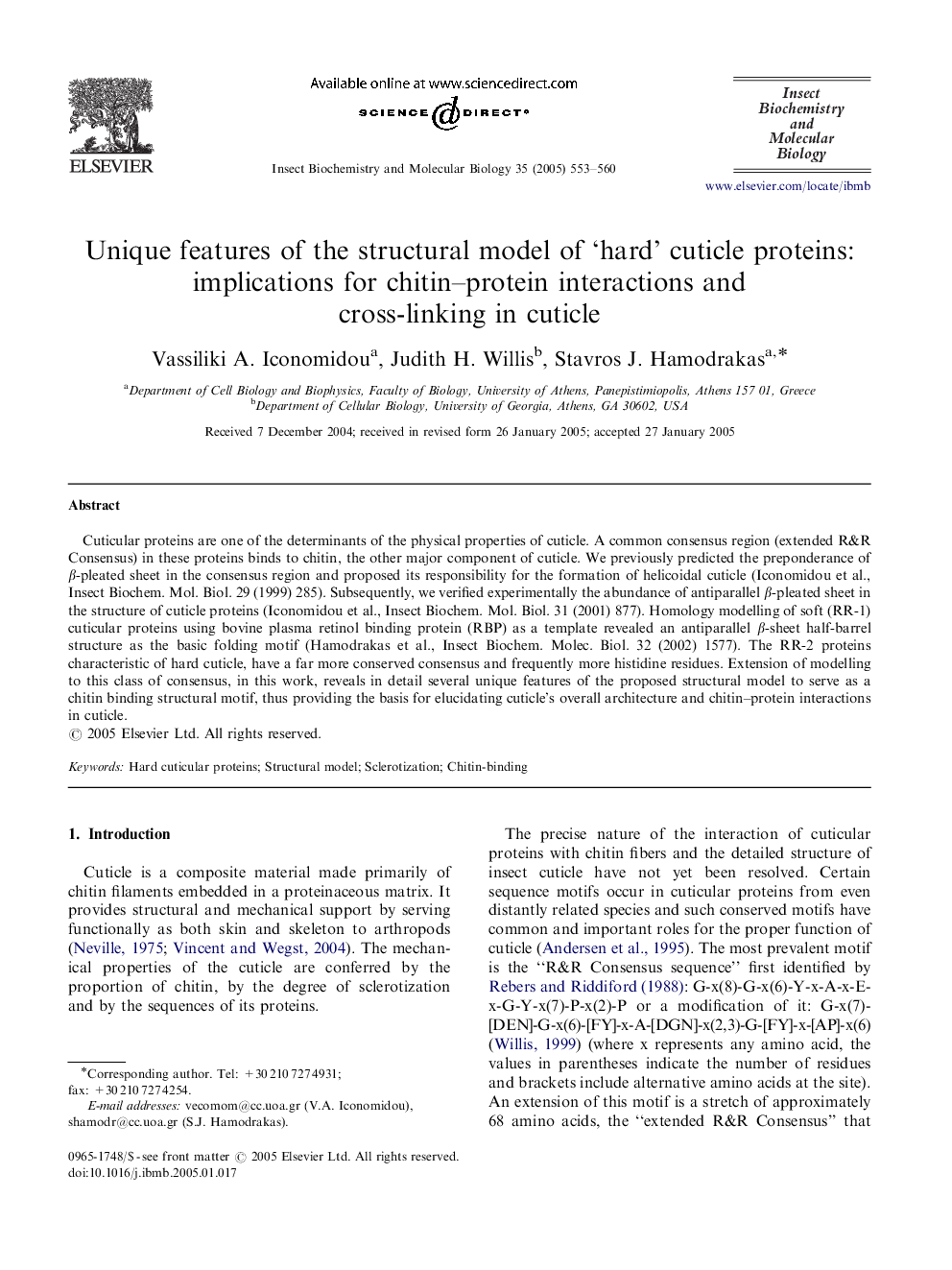| Article ID | Journal | Published Year | Pages | File Type |
|---|---|---|---|---|
| 10824544 | Insect Biochemistry and Molecular Biology | 2005 | 8 Pages |
Abstract
Cuticular proteins are one of the determinants of the physical properties of cuticle. A common consensus region (extended R&R Consensus) in these proteins binds to chitin, the other major component of cuticle. We previously predicted the preponderance of β-pleated sheet in the consensus region and proposed its responsibility for the formation of helicoidal cuticle (Iconomidou et al., Insect Biochem. Mol. Biol. 29 (1999) 285). Subsequently, we verified experimentally the abundance of antiparallel β-pleated sheet in the structure of cuticle proteins (Iconomidou et al., Insect Biochem. Mol. Biol. 31 (2001) 877). Homology modelling of soft (RR-1) cuticular proteins using bovine plasma retinol binding protein (RBP) as a template revealed an antiparallel β-sheet half-barrel structure as the basic folding motif (Hamodrakas et al., Insect Biochem. Molec. Biol. 32 (2002) 1577). The RR-2 proteins characteristic of hard cuticle, have a far more conserved consensus and frequently more histidine residues. Extension of modelling to this class of consensus, in this work, reveals in detail several unique features of the proposed structural model to serve as a chitin binding structural motif, thus providing the basis for elucidating cuticle's overall architecture and chitin-protein interactions in cuticle.
Related Topics
Life Sciences
Agricultural and Biological Sciences
Insect Science
Authors
Vassiliki A. Iconomidou, Judith H. Willis, Stavros J. Hamodrakas,
